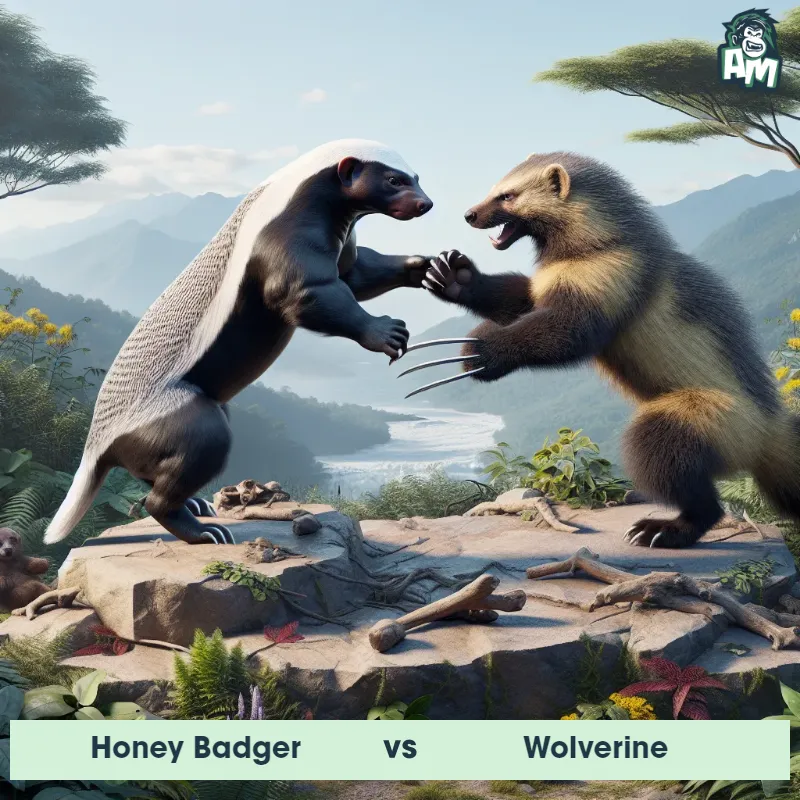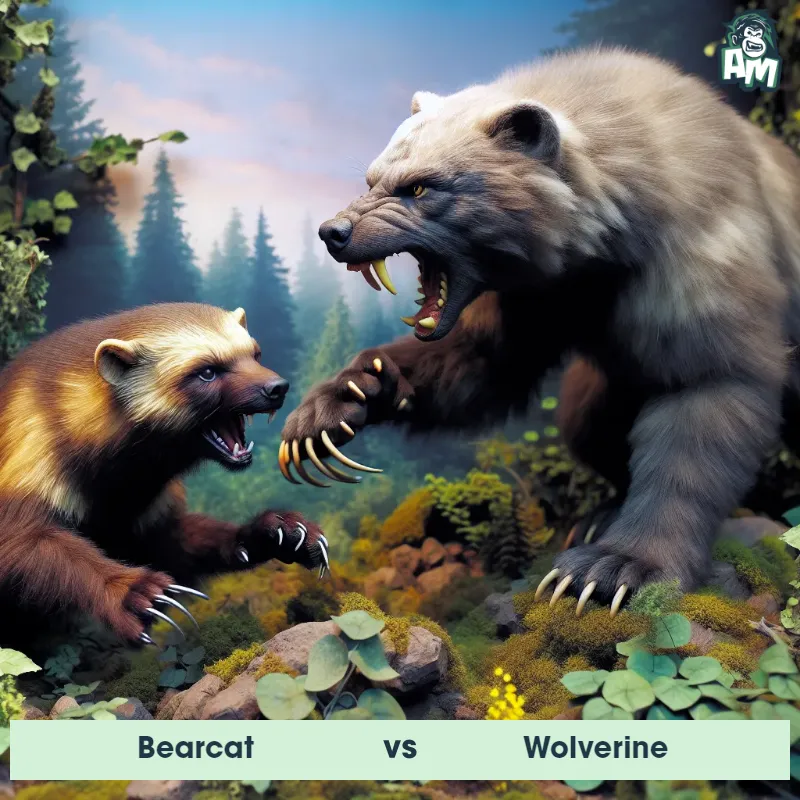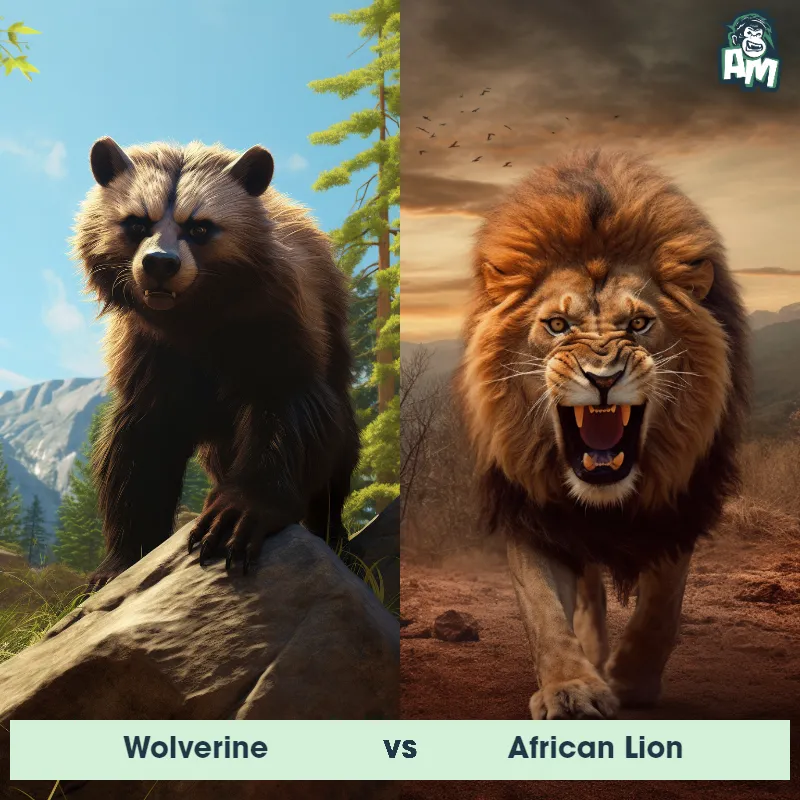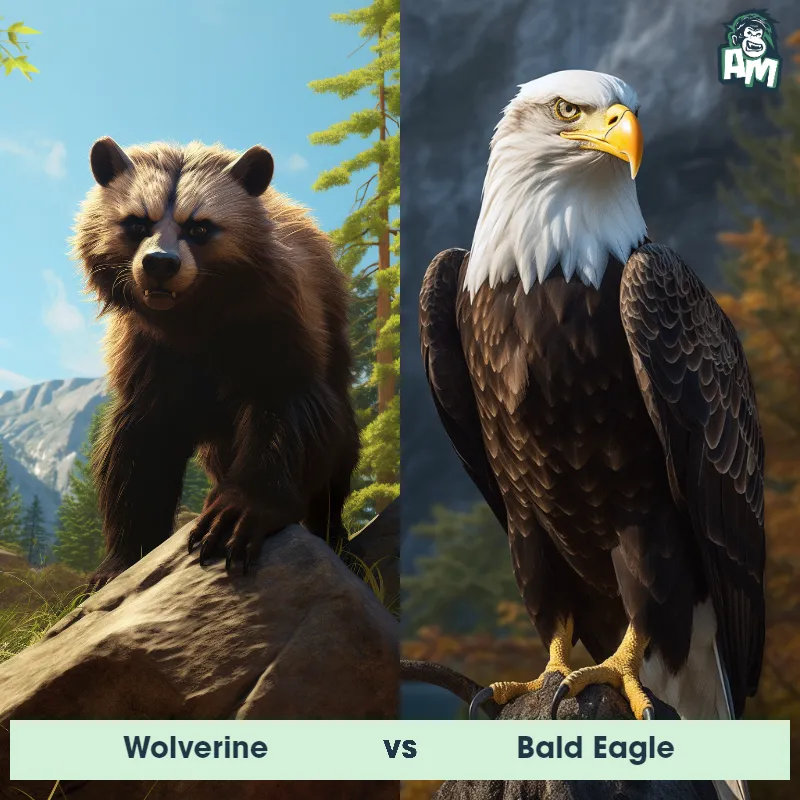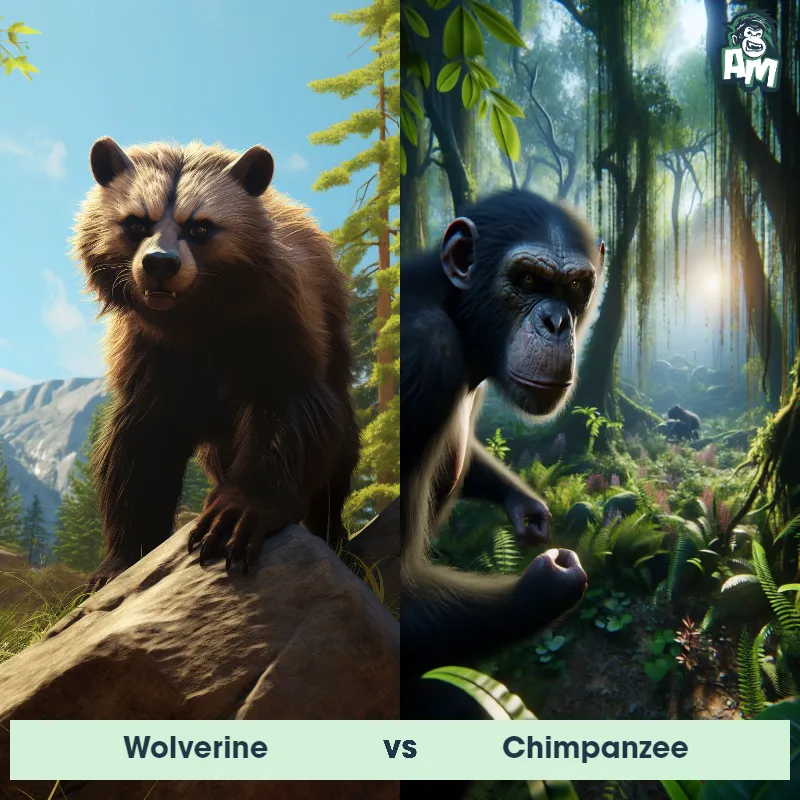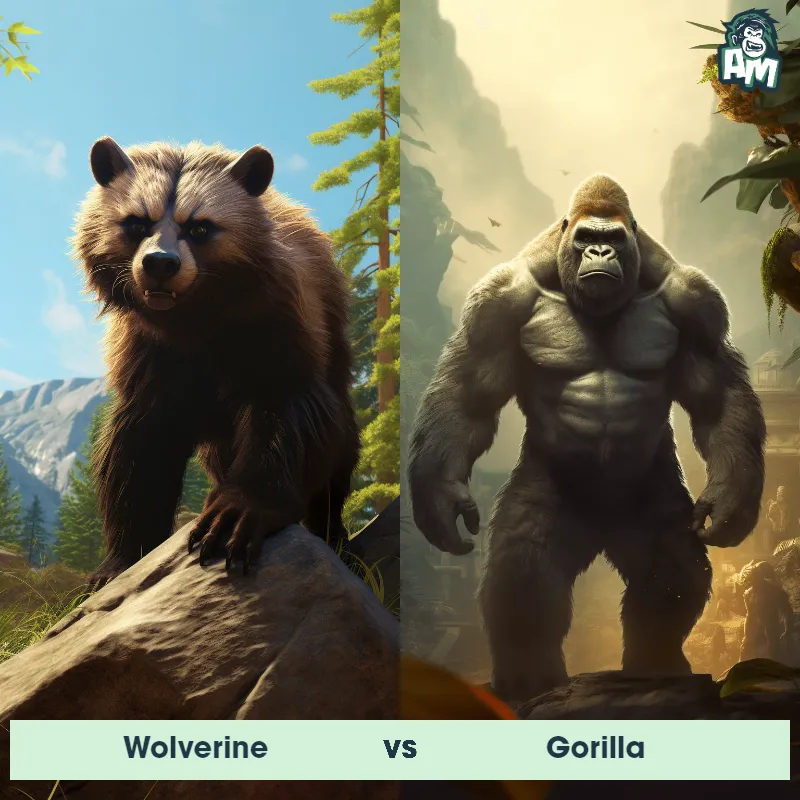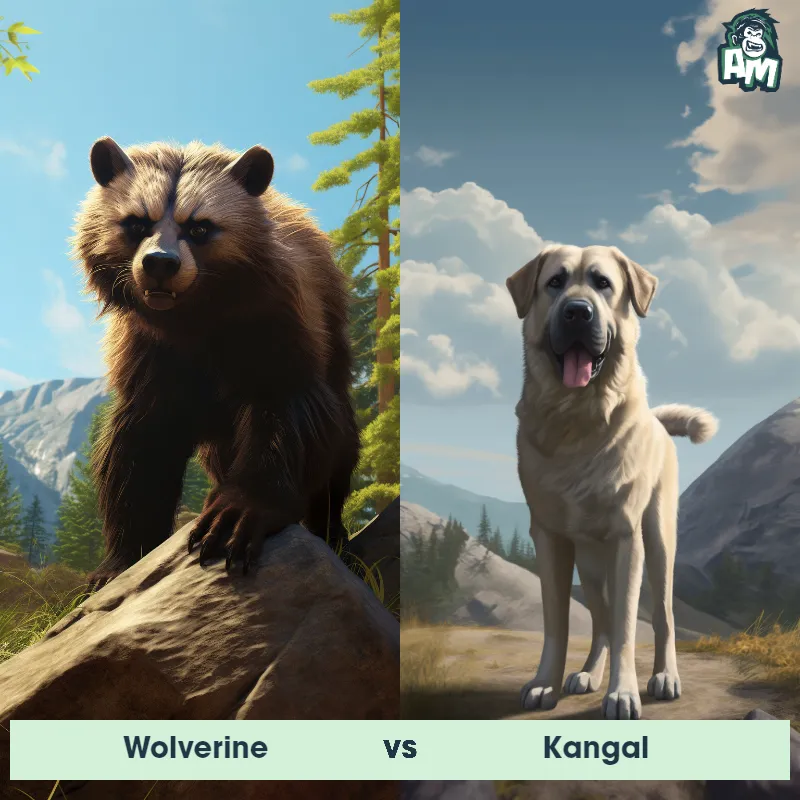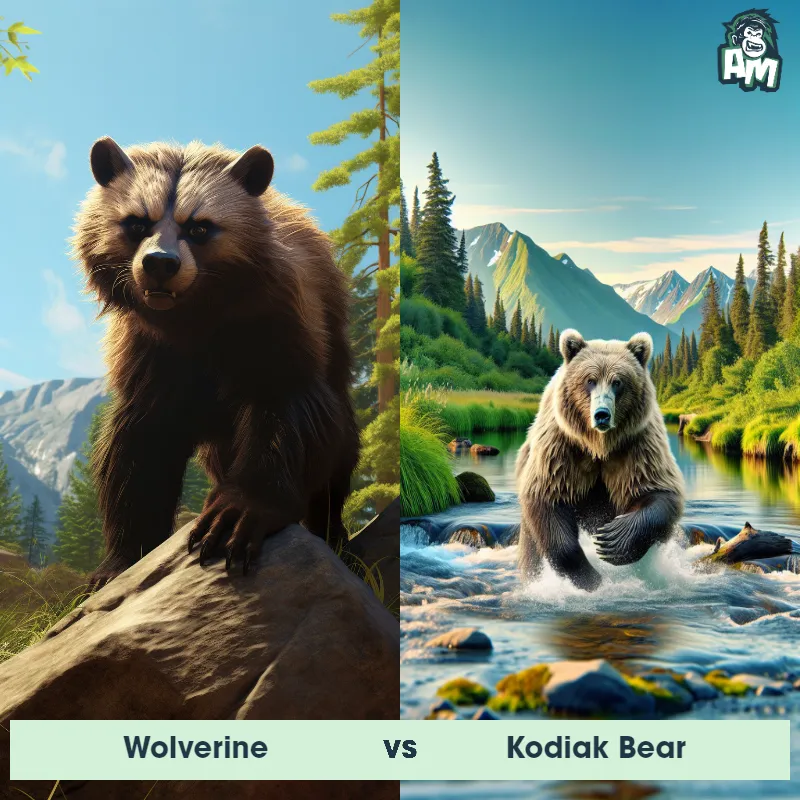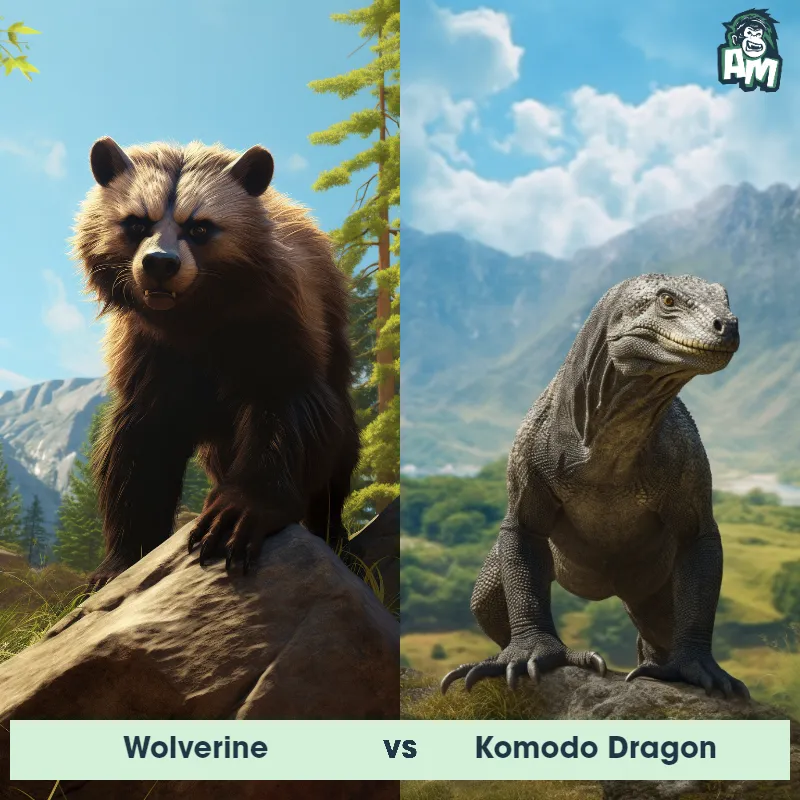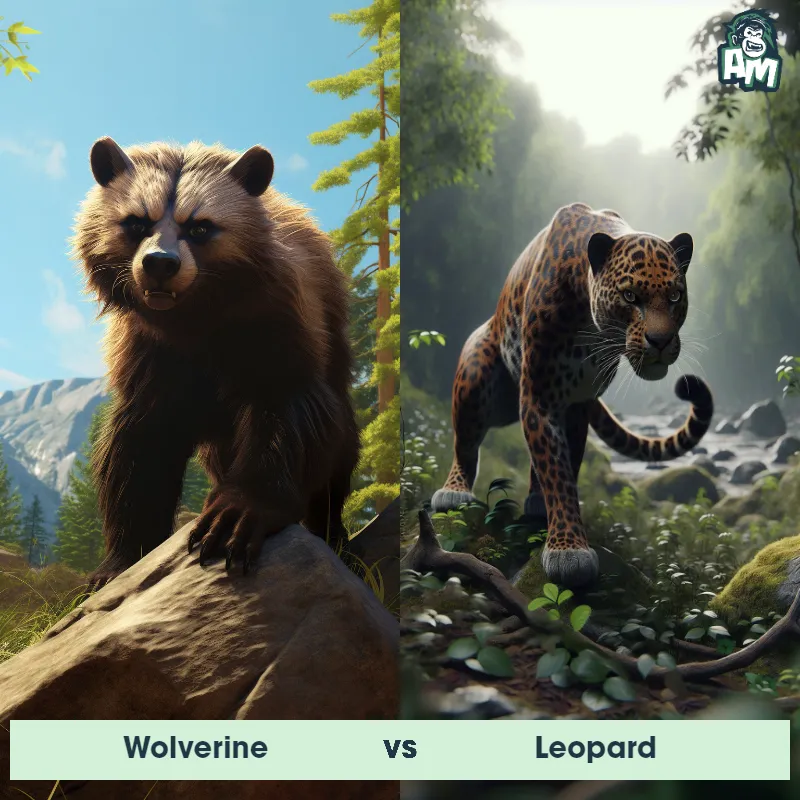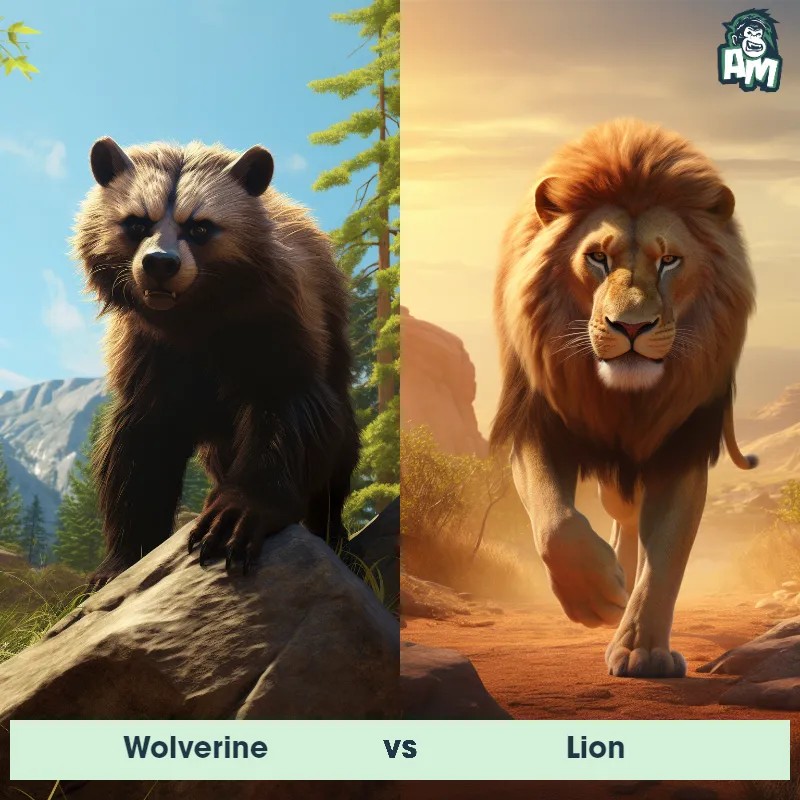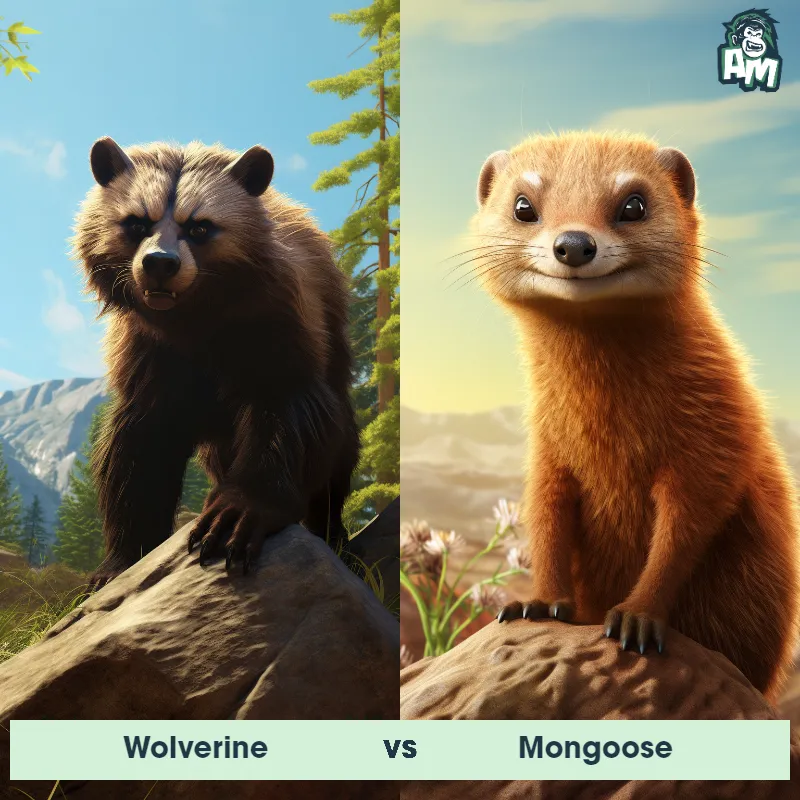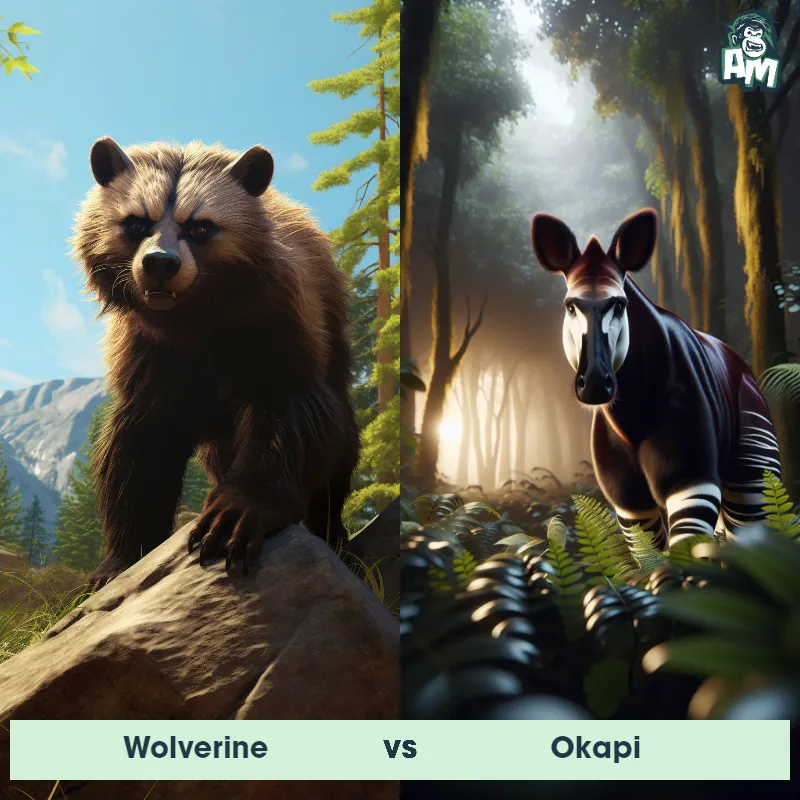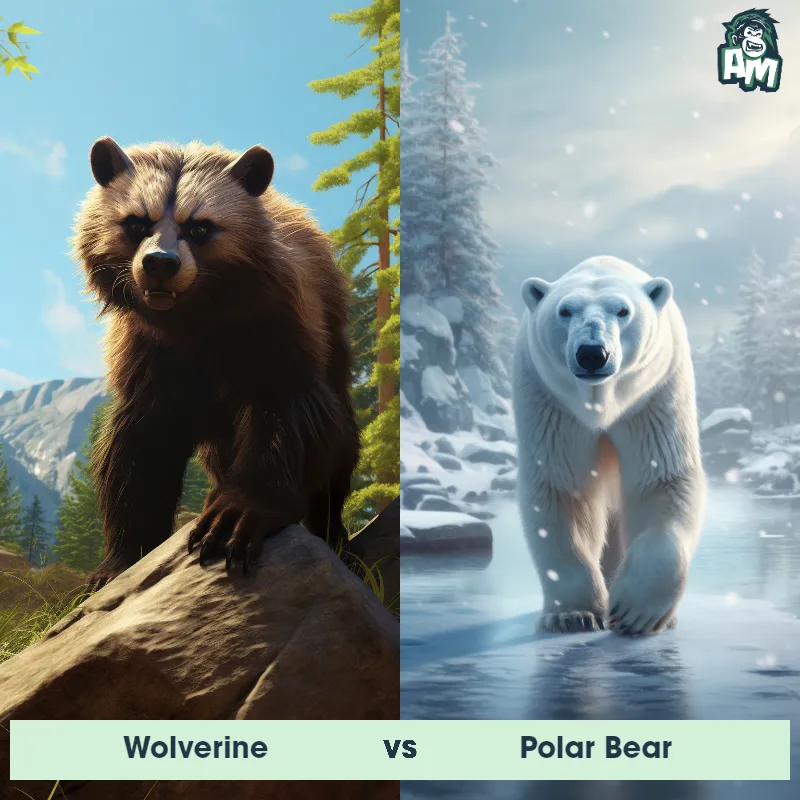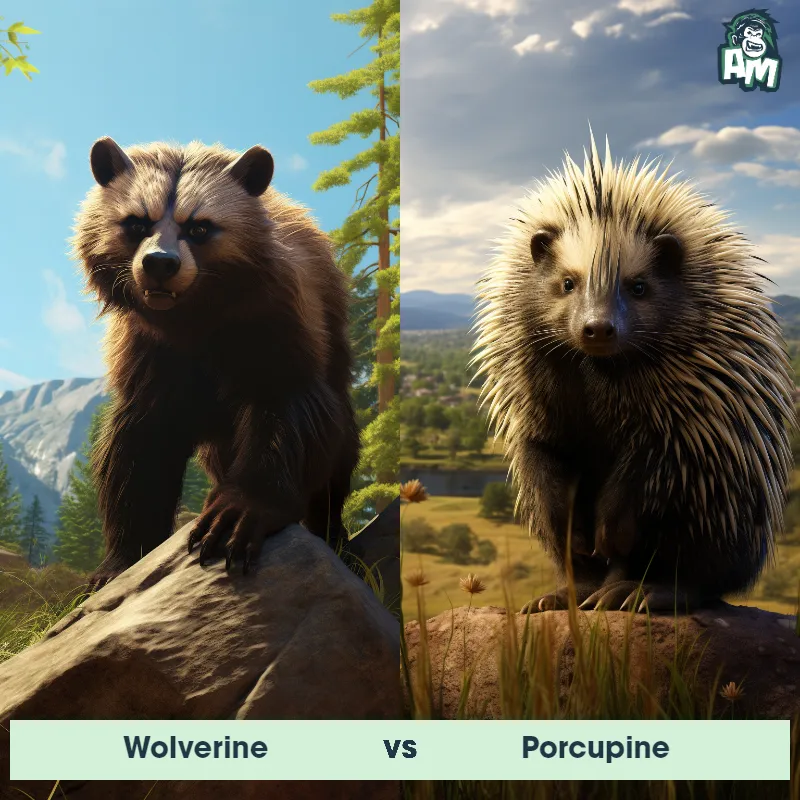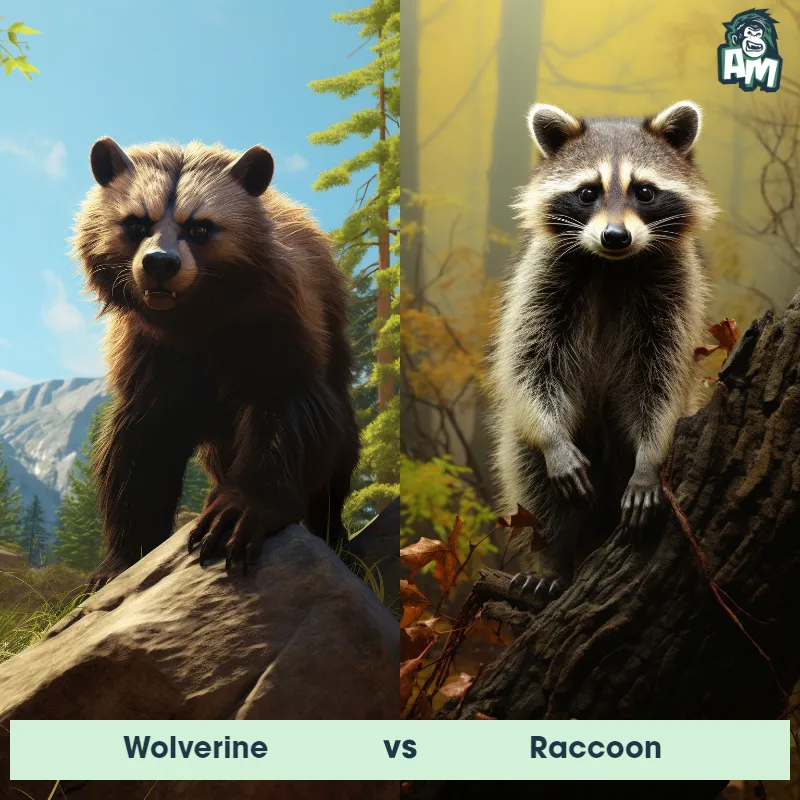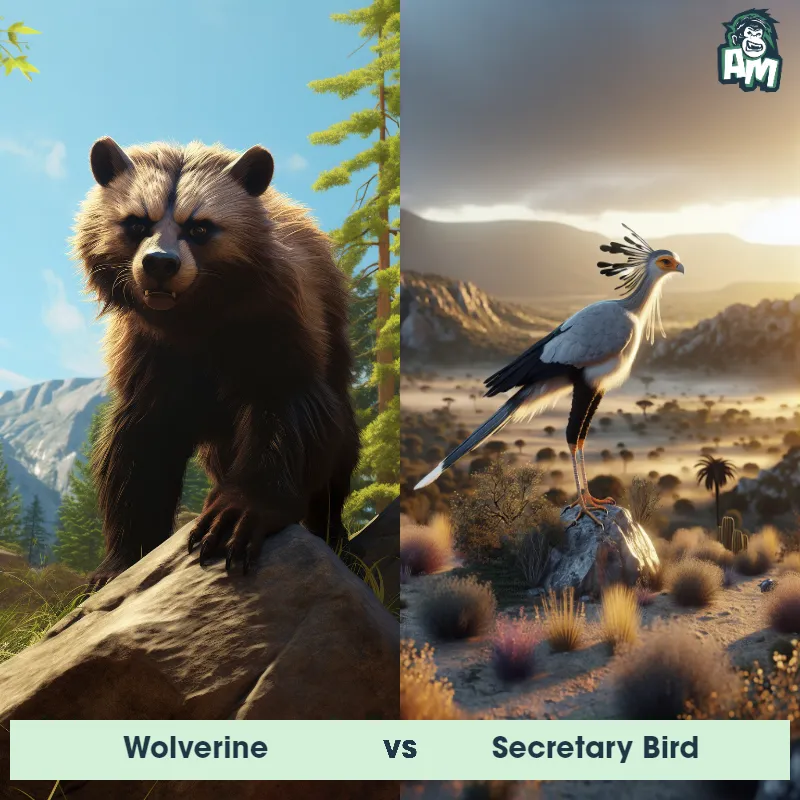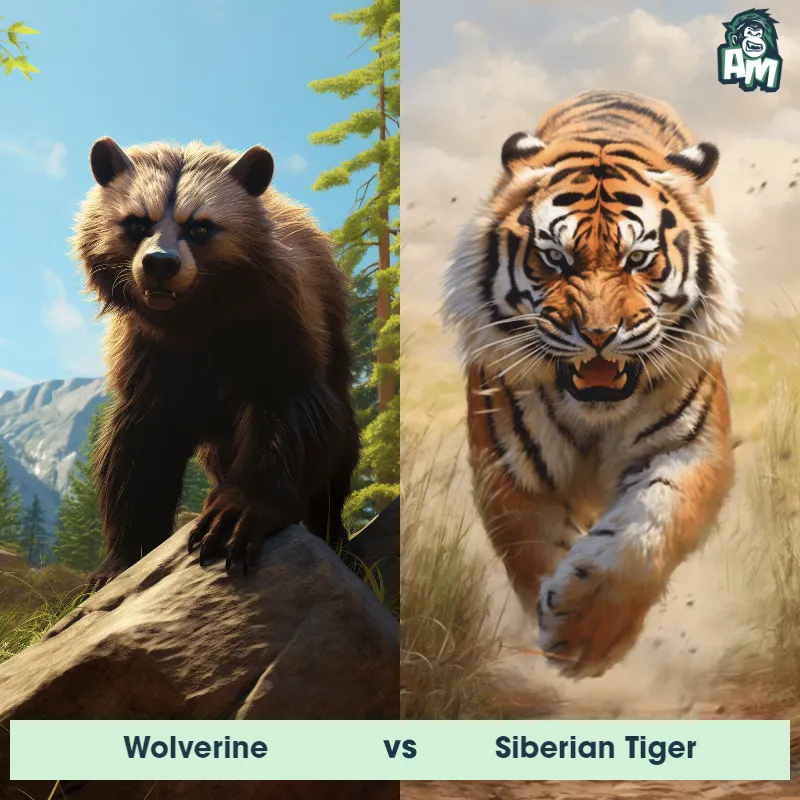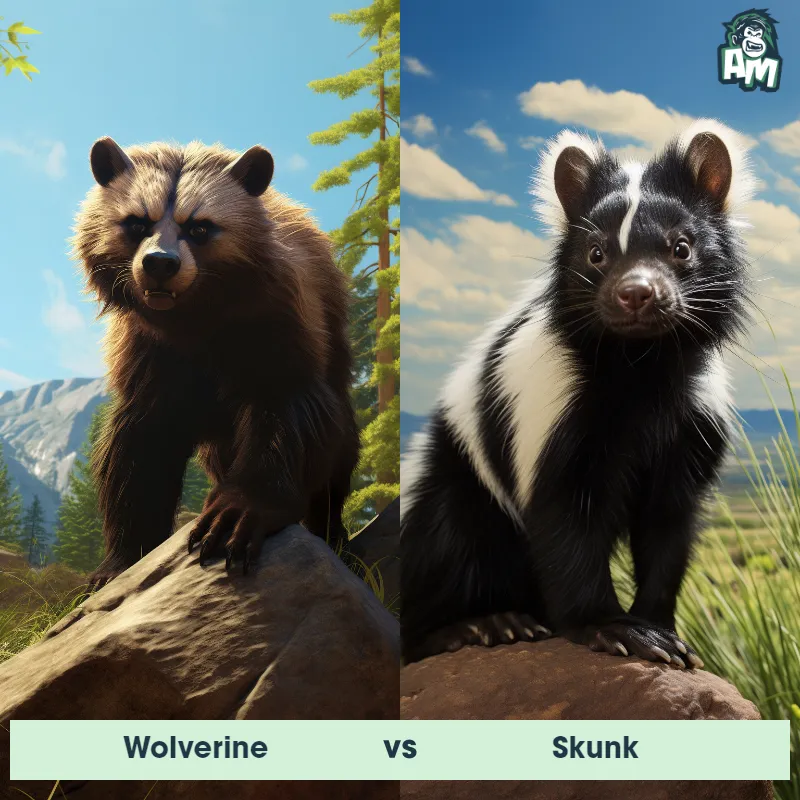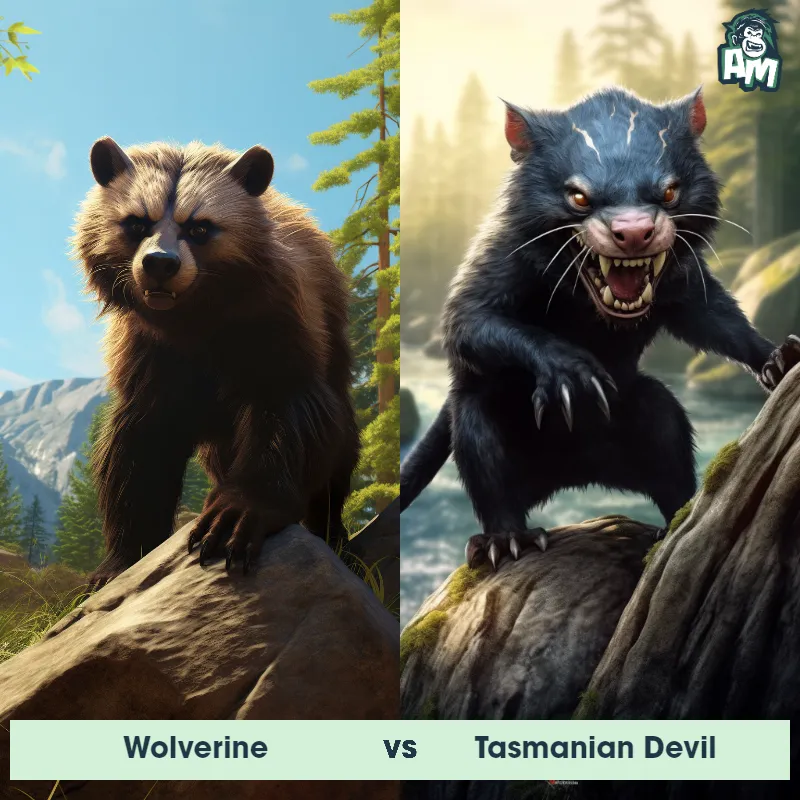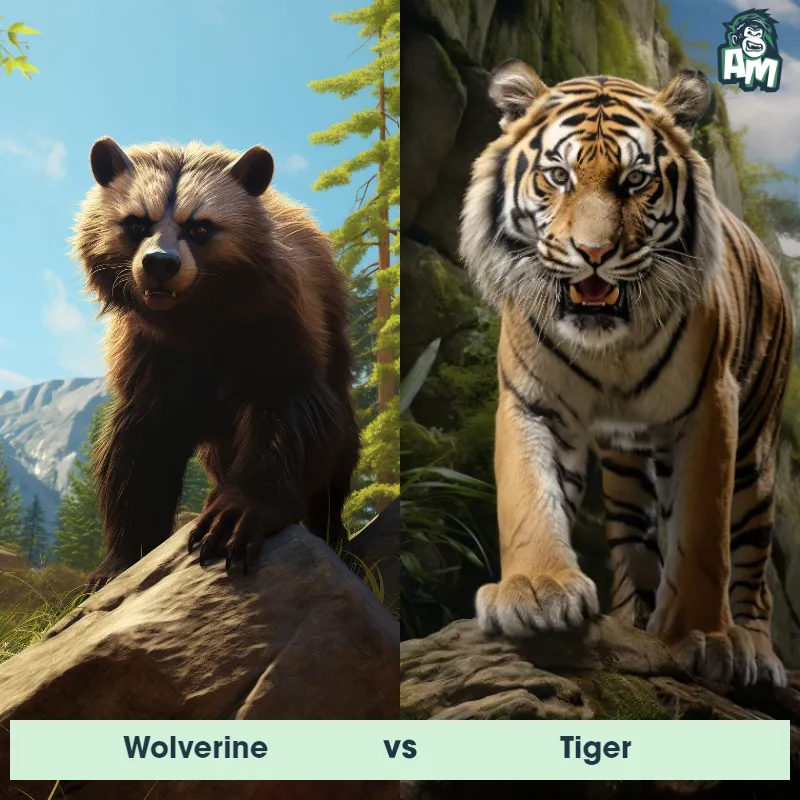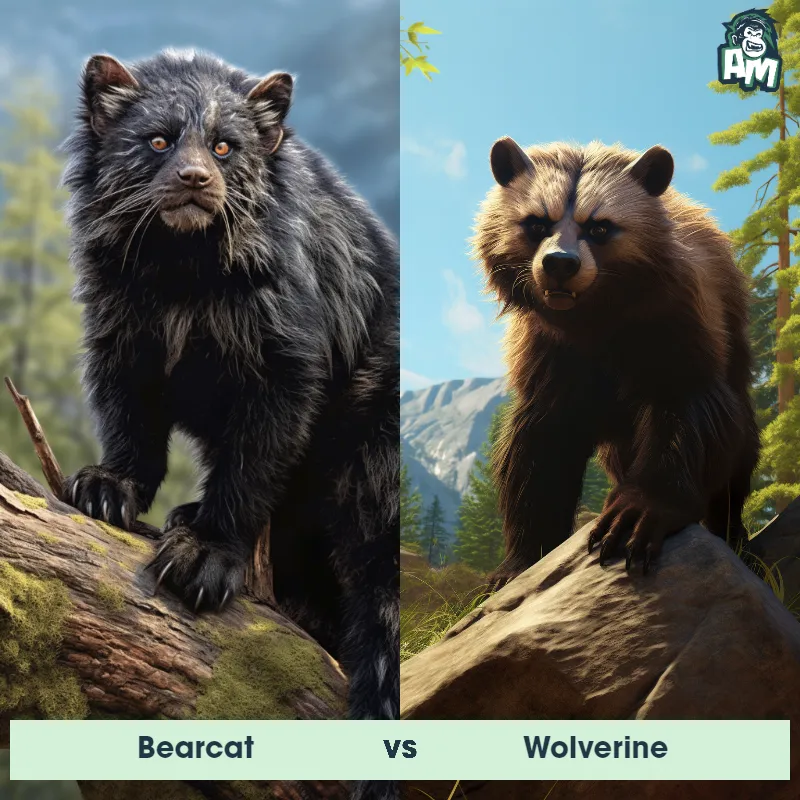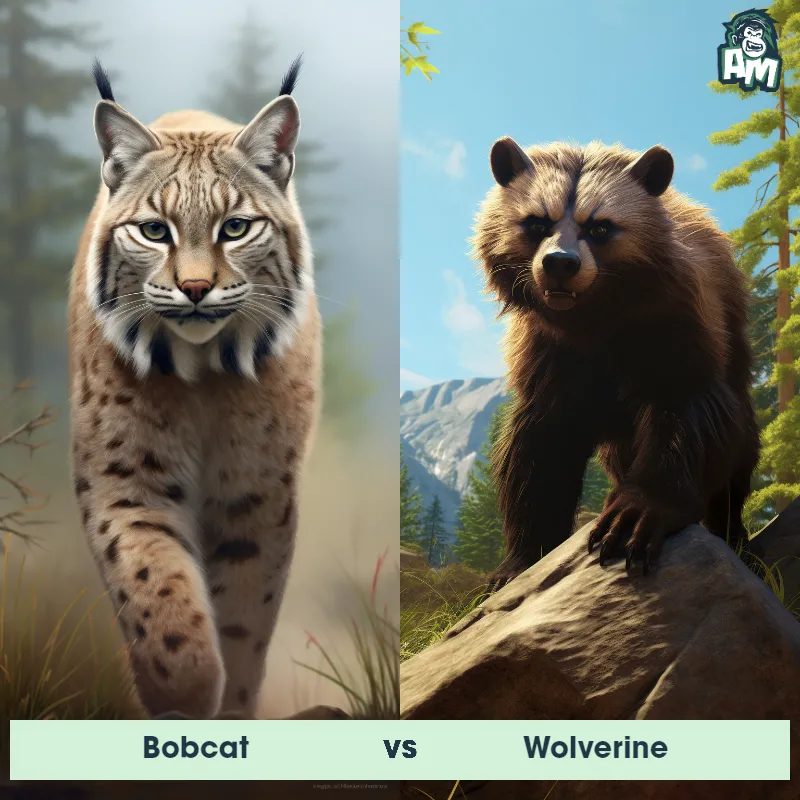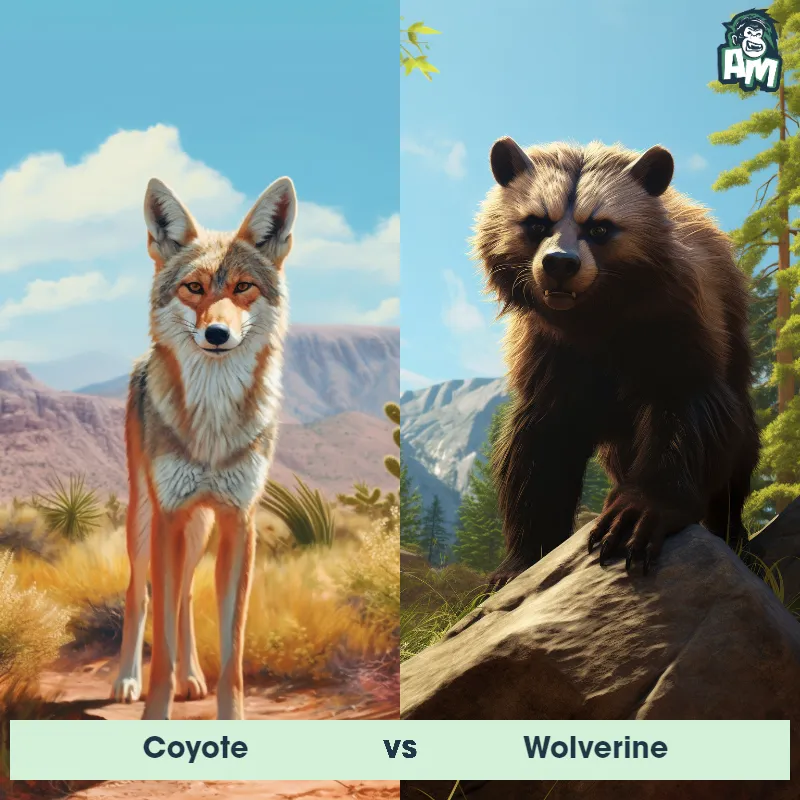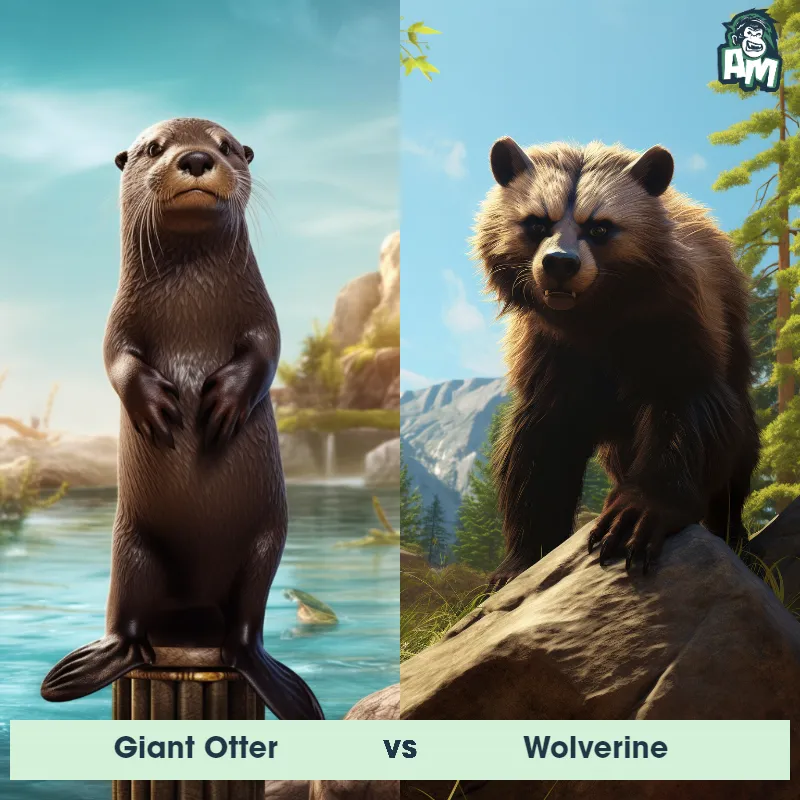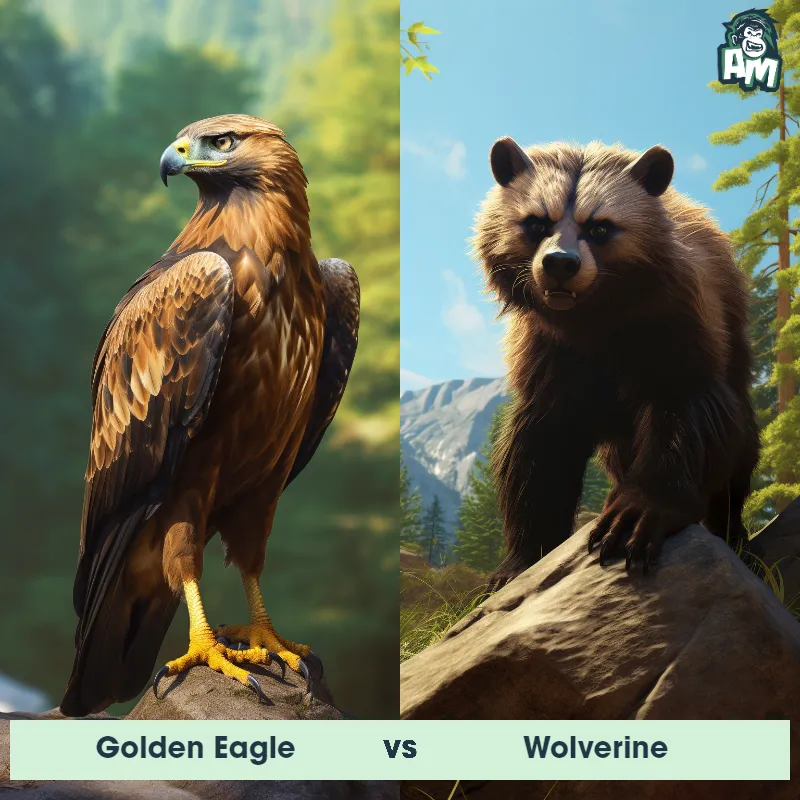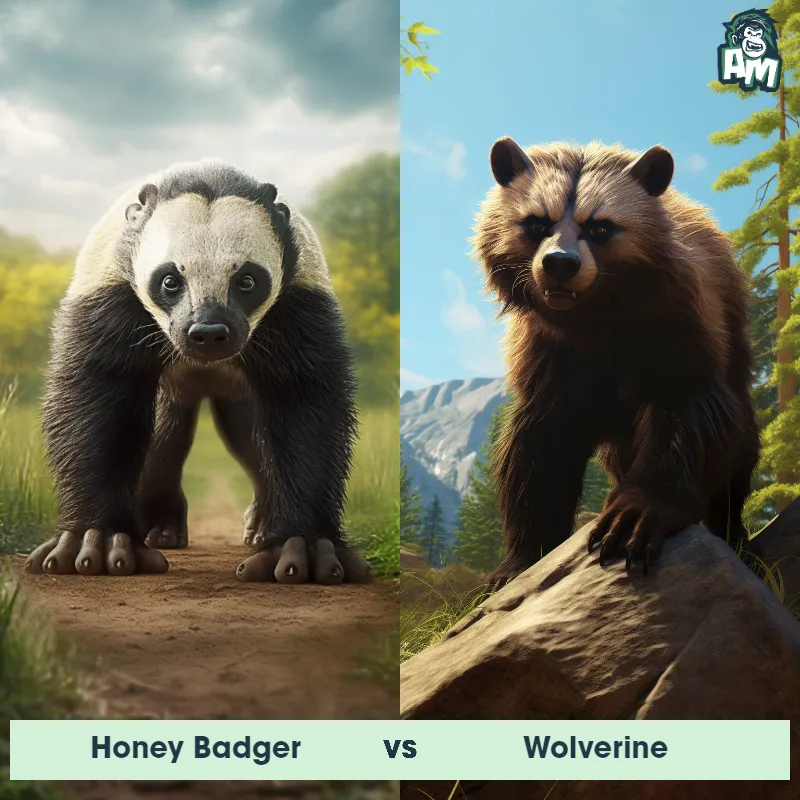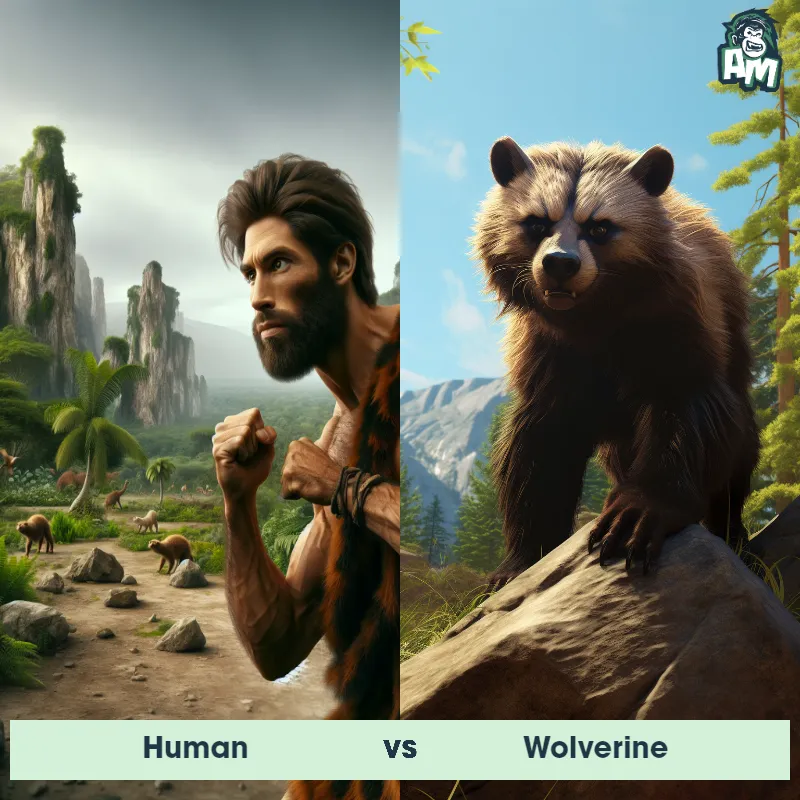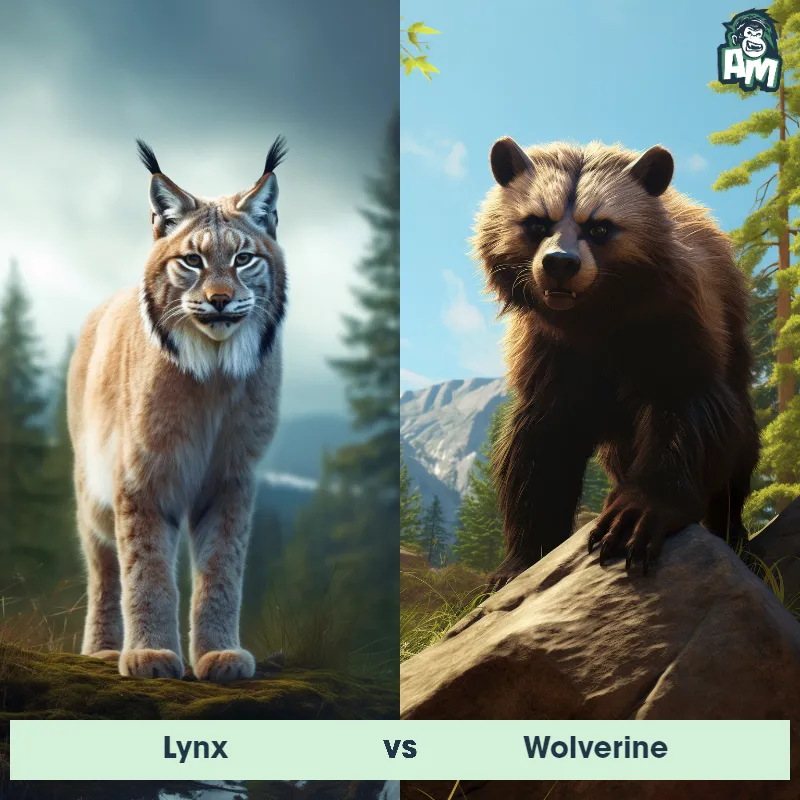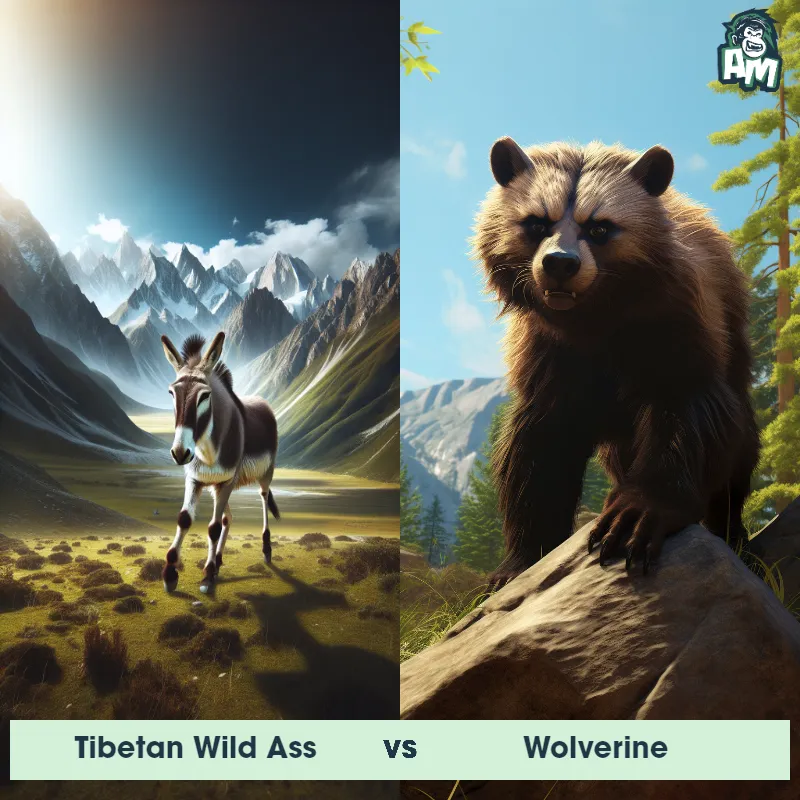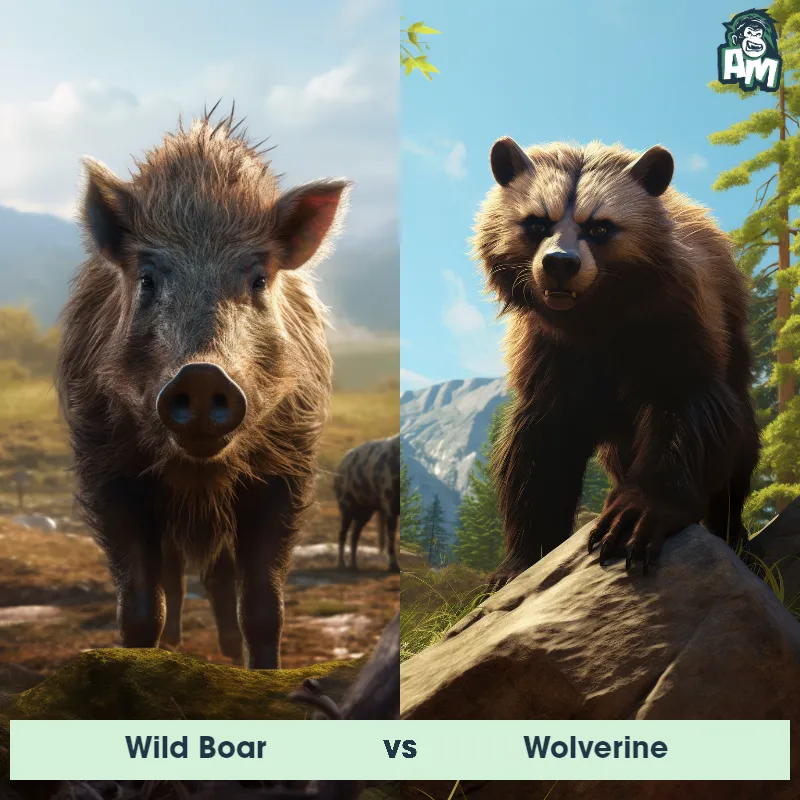The Wolverine
The Wolverine, also known as the Gulo gulo, is a stocky and muscular member of the weasel family. It is the largest land-dwelling species of the mustelid family, measuring around 27-45 inches in length and weighing around 24-40 pounds. Recognized by its dark brown fur with light patches on its face, neck, and chest, the Wolverine has a unique set of traits that make it a formidable predator. Its strong jaws, sharp teeth, and retractable claws prove to be useful in hunting prey and defending itself. This solitary animal is known for its ferocious nature and ability to traverse vast distances in search of food, often roaming territories of up to 500 square miles.
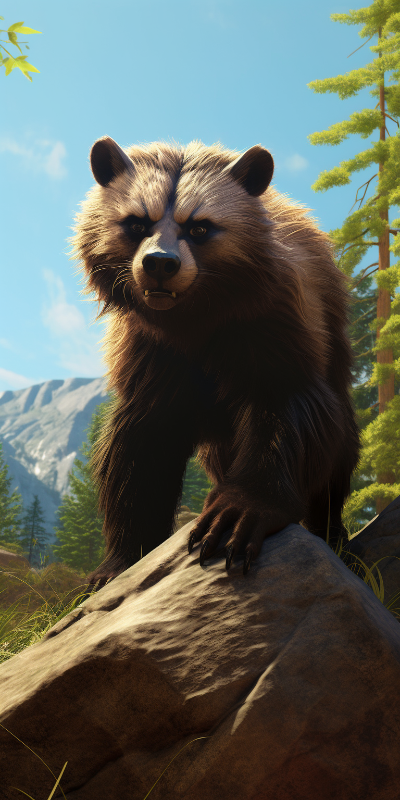
| Wolverine | |
|---|---|
| Size | 26-34 inches (66-86 cm) in length |
| Weight | 22-55 pounds (10-25 kg) |
| Speed | Speed: 30 mph (48.28 km/hr) |
| Key Strength | Powerful jaws and sharp claws |
| Biggest Weakness | Short legs and slow movement |
| Scientific Name | Gulo gulo |
| Family | Mustelidae |
| Habitat | Forests, tundra, and alpine meadows |
| Geography | North America, Europe, and Asia |
| Diet | Carnivorous, feeding on small mammals, birds, fish, and carrion |
| Lifespan | 5 years - 13 years |

The Wolverine
The Wolverine, also known as the Gulo gulo, is a stocky and muscular member of the weasel family. It is the largest land-dwelling species of the mustelid family, measuring around 27-45 inches in length and weighing around 24-40 pounds. Recognized by its dark brown fur with light patches on its face, neck, and chest, the Wolverine has a unique set of traits that make it a formidable predator. Its strong jaws, sharp teeth, and retractable claws prove to be useful in hunting prey and defending itself. This solitary animal is known for its ferocious nature and ability to traverse vast distances in search of food, often roaming territories of up to 500 square miles.
Fun Fact: The Wolverine has a ferocious appetite and can consume large quantities of food in a short period of time, often feeding on carcasses bigger than itself.
| Wolverine | |
|---|---|
| Size | 26-34 inches (66-86 cm) in length |
| Weight | 22-55 pounds (10-25 kg) |
| Speed | Speed: 30 mph (48.28 km/hr) |
| Key Strength | Powerful jaws and sharp claws |
| Biggest Weakness | Short legs and slow movement |
| Scientific Name | Gulo gulo |
| Family | Mustelidae |
| Habitat | Forests, tundra, and alpine meadows |
| Geography | North America, Europe, and Asia |
| Diet | Carnivorous, feeding on small mammals, birds, fish, and carrion |
| Lifespan | 5 years - 13 years |
Match Highlights
Wolverine Matchups
We use AI to simulate matchups between the Wolverine and other animals. Our simulation considers size, strength, and natural predatory behaviors to determine the most likely outcome.
Wolverine: Diet, Predators, Aggression, and Defensive Behaviors
What do Wolverines eat?
Wolverines are opportunistic feeders and scavengers with a varied diet. They mainly consume small mammals like rodents, birds, and rabbits. They have also been known to feed on carrion, fruits, berries, and even larger prey like deer or caribou when available. Wolverines have incredible strength and jaws that allow them to crush bones to get to the nutritious marrow inside.
Do Wolverines have any predators?
While Wolverines are apex predators in their environments, they do have some natural enemies. Predators like wolves, bears, and even cougars may occasionally pose a threat to Wolverines, especially if they are vulnerable, such as when they are young cubs. However, due to their fierce nature and relative rarity, Wolverines are not typically easy prey for other animals.
Are Wolverines aggressive?
Wolverines have a reputation for being strong, territorial, and aggressive animals, especially when defending their food or young. They are known to be fearless and will not hesitate to confront larger animals if necessary, even standing up to grizzly bears. While Wolverines may not actively seek out confrontations, they are not easily intimidated and will fiercely defend themselves when challenged.
Do Wolverines fight with other animals?
Wolverines are solitary animals and are not typically social. However, they may engage in conflicts with other animals, especially when it comes to defending their territory or resources. Wolverines are known for their tenacity and will not back down from a fight if provoked, using their sharp claws and powerful jaws to defend themselves or their food.
How do Wolverines defend themselves?
Wolverines have several defense mechanisms to protect themselves from threats. They have sharp claws that allow them to climb trees, dig into snow, and defend themselves against predators. Wolverines also have a thick, coarse fur coat that provides insulation and protection from cold temperatures, as well as a strong musky scent that can deter potential threats or competitors.
What is a Wolverine's biggest weakness in a fight?
Despite their formidable nature, Wolverines do have a notable weakness in a fight - their relatively small size. While they are strong and agile, Wolverines are still relatively small compared to some of their potential predators, such as bears or wolves. This size difference can put Wolverines at a disadvantage in a direct confrontation, especially if they are outnumbered or facing a particularly large opponent.
Fun Fact: Despite their fearsome reputation, Wolverines are also known for their playful behavior, engaging in sliding down snow-covered slopes and rolling in the snow for enjoyment.
Fun Fact: The Wolverine possesses a special adaptation that allows it to climb trees, helping it to escape from predators or access hard-to-reach food sources in its alpine and subarctic habitat.



